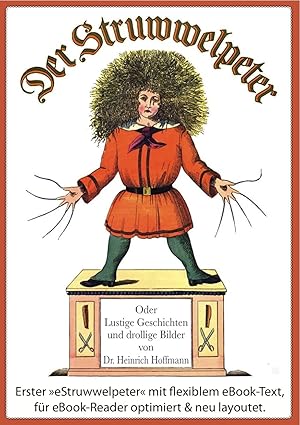
Das Buch wurde im Jahr 1845 von Heinrich Hoffmann geschrieben. Es besteht aus vielen kurzen Geschichten mit Reimen. Jede Geschichte zeigt ein Kind, das etwas falsch macht – und was dann passiert. Manche Geschichten sind ein bisschen gruselig oder traurig,
aber auch lustig und interessant.
Ursprünglich war dieses Buch für kleine Kinder gedacht, aber heute lesen es meistens Schulkinder ab sechs Jahren, weil einige Geschichten ziemlich schockierend sind.
Meine Freundin aus meiner Deutschlerngruppe vor dreißig Jahren liest dieses Buch auf YouTube vor. In ihrem Video sieht man die Bilder und die deutschen Texte aus dem Original, aber sie liest den Text auf Japanisch vor. So kann man den Inhalt gut verstehen.
Außerdem habe ich ein anderes YouTube-Video gefunden, in dem ein deutscher Muttersprachler das Buch mit Bildern liest. Mit diesem Video kann man sehr gut Aussprache und Intonation üben.
Ich empfehle, beide Videos anzuschauen – zuerst das deutsche Video zum Hören und Sprechen, und dann das japanische Video, um den Inhalt besser zu verstehen.
主な内容(短編集のようになっています)
Der Struwwelpeter(もじゃもじゃペーター)
髪も爪も切らず、みっともない格好の少年。誰も近づかず、友達もできない。Der böse Friederich(悪いフリードリヒ)
動物や人をいじめる少年。犬に噛まれて寝込んでしまう。Das Mädchen mit dem Feuerzeug(マッチで遊ぶ女の子)
マッチを使って火遊びをした女の子が、ドレスに火がついて焼け死ぬ。Die Geschichte von den schwarzen Buben(黒い子たちの話)
黒人をからかった少年がインクの中に落とされ、自分が真っ黒になる。Suppen-Kaspar(スープを飲まないカスパー)
食事を拒み続け、5日目にやせ細って死んでしまう少年。Zappel-Philipp(じっとしていられないフィリップ)
食卓で暴れてテーブルクロスを引き、食器を全部落としてしまう。Daumenlutscher(親指しゃぶりの話)
母に「しゃぶったら仕立屋が来て切るよ」と言われたのに、しゃぶってしまい、
本当に親指を切り落とされる。
I bought this book about thirty years ago in Germany. It cost 14.80 Deutsche Marks, which was around 1,100 yen at that time.
The book was written in 1845 by Heinrich Hoffmann. It contains many short stories written in rhyme. Each story shows a child doing something wrong — and what happens after that. Some stories are a bit scary or sad, but also funny and interesting.
Originally, it was written for very young children, but today it is usually read by school-age children (6 and up), because some stories are a little shocking.
One of my female friends from my German study group thirty years ago is reading this book aloud on YouTube. In her video, you can see the original pictures and German text,
but she reads it in Japanese, so it’s easy to understand the meaning of each story.
I also found another YouTube video where a native German speaker reads the book while showing the pictures. With this video, you can practice pronunciation and intonation very well.
I recommend watching both videos — first the German version for listening and speaking practice, and then the Japanese version to understand the content more clearly.




No comments:
Post a Comment